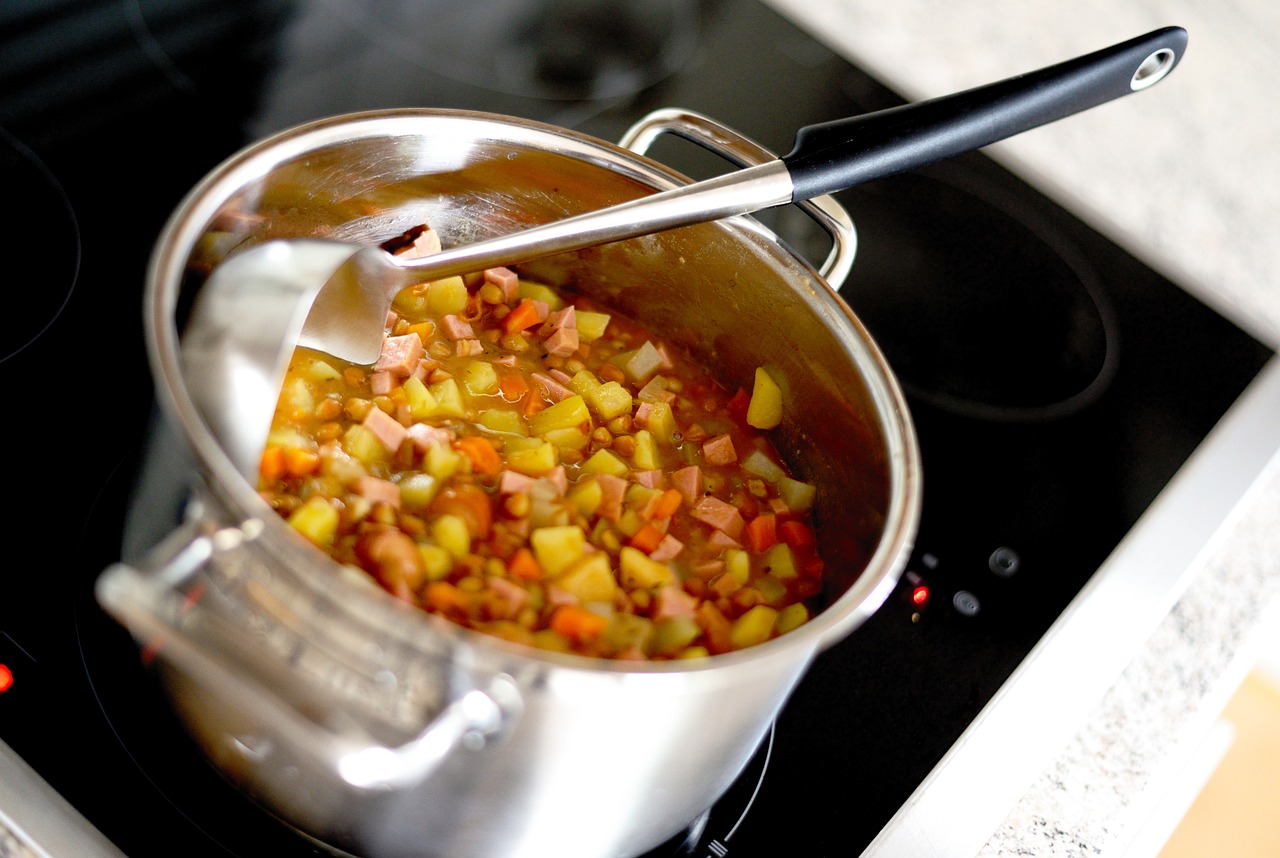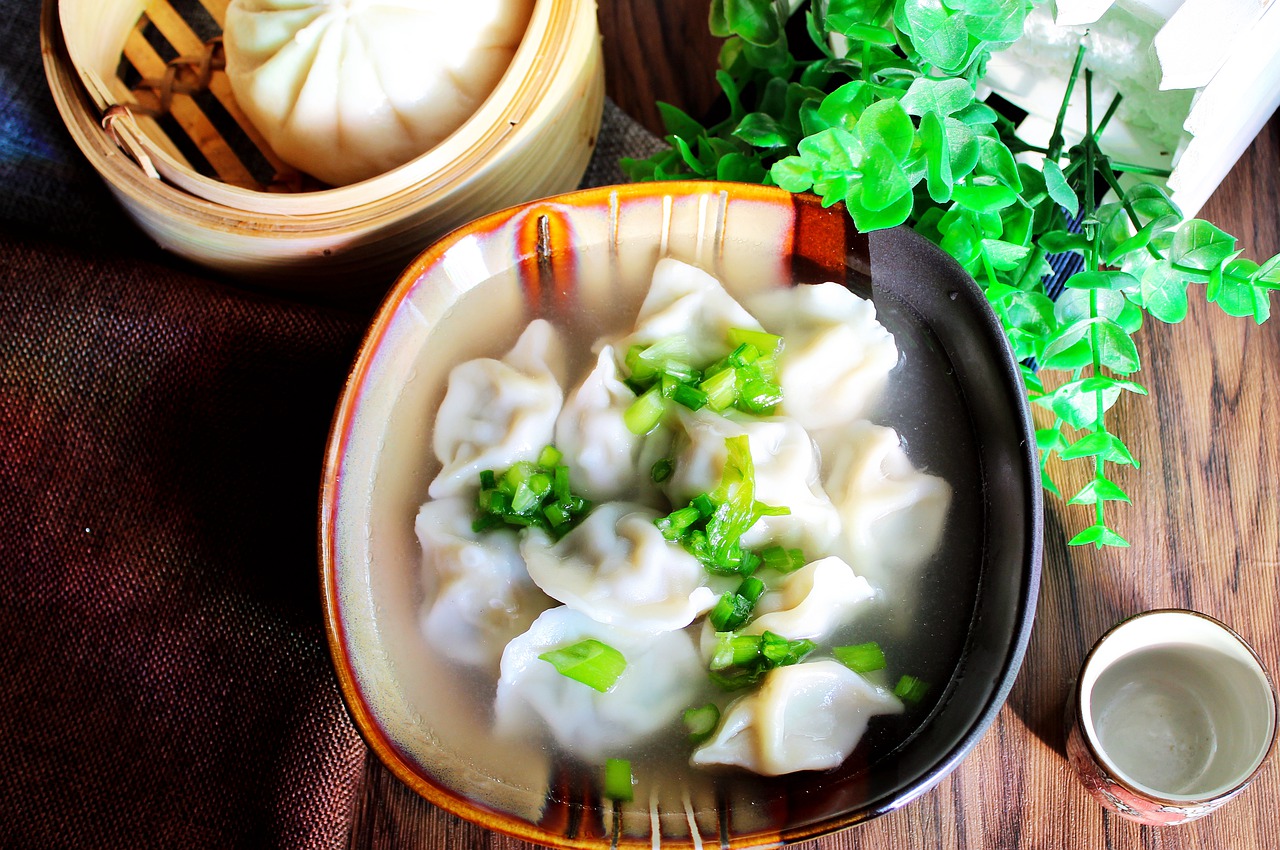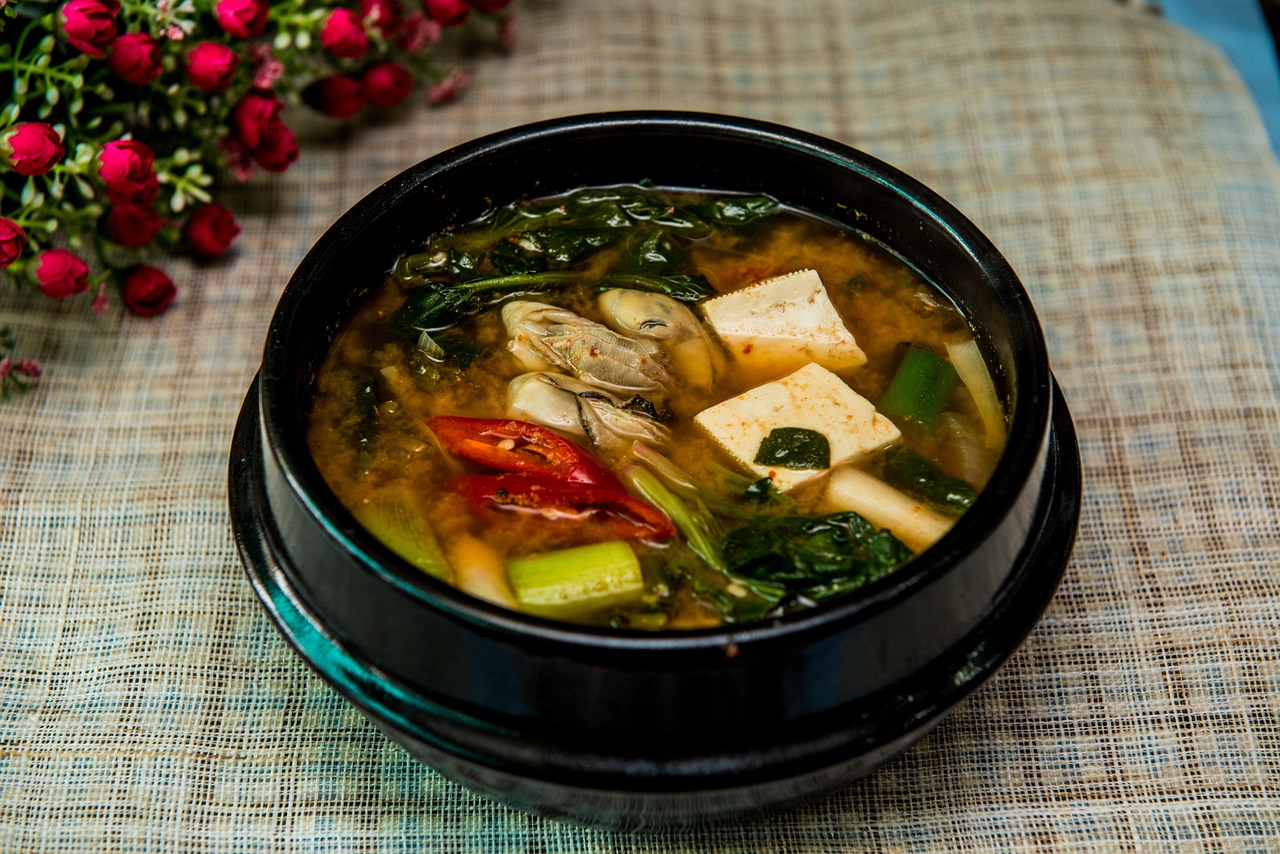Wonton Soup: Flavorful Chinese Soup with Dumplings and Broth

Wonton soup is a beloved dish in Chinese cuisine, known for its flavorful broth, delicate dumplings, and aromatic herbs. Each spoonful of this soup is like a burst of flavors, offering a comforting and satisfying experience to those who indulge in its warmth and richness.
Originating from Northern China, wonton soup has a long history that dates back centuries. It is deeply rooted in Chinese culinary traditions and has become a staple in Chinese restaurants worldwide. The evolution of wonton soup reflects the cultural diversity and culinary expertise of the Chinese people, showcasing their skill in creating dishes that are both delicious and nourishing.
The key to a delicious bowl of wonton soup lies in its ingredients and preparation. The dumplings are typically made with a mixture of ground pork, shrimp, and seasonings, wrapped in thin dough and shaped into small parcels. The broth, often simmered with chicken or pork bones, is infused with flavors from ginger, garlic, and scallions, creating a savory base for the dumplings to soak up.
When it comes to variations of wonton soup, different regions in China have put their own spin on this classic dish. From the hearty and robust flavors of Sichuan-style wonton soup to the light and delicate Cantonese version, each variation offers a unique taste experience that reflects the local ingredients and cooking techniques.
Aside from its delicious taste, wonton soup also offers a range of health benefits. The broth is rich in nutrients and collagen, which are beneficial for skin health and joint function. The dumplings provide a good source of protein, making this soup a wholesome and satisfying meal option for those looking to nourish their bodies.
When serving wonton soup, it is best enjoyed piping hot, garnished with fresh cilantro or green onions for a pop of color and freshness. Pairing the soup with a side of steamed vegetables or a light salad can complement the flavors and textures of the dish, creating a well-rounded dining experience that satisfies both the palate and the soul.
Ingredients and Preparation
When it comes to preparing a delicious bowl of wonton soup, the key lies in the careful selection of ingredients and the meticulous preparation process. The foundation of this flavorful Chinese soup consists of two main components: the dumplings and the savory broth. Let's delve into the essential elements that make up this beloved dish and the step-by-step guide to creating a comforting bowl of wonton soup.
Ingredients:
To make authentic wonton soup, you will need a combination of fresh and flavorful ingredients. Here are the key components required to craft this traditional dish:
- Wonton wrappers: Thin sheets of dough made from flour, water, and sometimes egg, used to encase the filling.
- Filling: A mixture typically comprising ground pork, shrimp, garlic, ginger, soy sauce, and green onions, seasoned to perfection.
- Broth: A rich and aromatic broth made from simmering chicken or pork bones with aromatics such as ginger, garlic, and green onions.
- Additional ingredients: Optional additions like bok choy, mushrooms, and water chestnuts can be included to enhance the flavor and texture of the soup.
Preparation:
The process of preparing wonton soup involves a series of meticulous steps to ensure that each element contributes to the overall taste and texture of the dish. Here is a general overview of how to make this delectable soup:
- Prepare the filling: Combine the ground pork, shrimp, and seasonings in a bowl, mixing thoroughly to create a flavorful filling mixture.
- Assemble the wontons: Place a small amount of filling in the center of each wonton wrapper, wet the edges with water, and fold them to seal the dumplings.
- Cook the wontons: Boil the wontons in a pot of water until they float to the surface, indicating that they are cooked through.
- Simmer the broth: In a separate pot, simmer the broth ingredients together to develop a rich and savory base for the soup.
- Combine and serve: Place a few cooked wontons in a bowl, ladle the hot broth over them, and garnish with additional ingredients like bok choy or sliced green onions before serving.
By following these steps and using high-quality ingredients, you can create a steaming bowl of wonton soup that is sure to delight your taste buds and warm your soul. The careful balance of flavors and textures in this dish makes it a beloved classic in Chinese cuisine, perfect for cozy nights or gatherings with loved ones.
Variations and Regional Differences
When it comes to wonton soup, the variations and regional differences add a delightful twist to this classic Chinese dish. Each region puts its unique stamp on the recipe, creating a diverse culinary landscape that caters to different palates and preferences.
In Northern China, wonton soup is typically served with a clear broth and filled with a mixture of minced pork and shrimp. The dumplings are small and delicate, allowing the flavors of the filling to shine through. This version is known for its simplicity and emphasis on fresh ingredients.
On the other hand, Southern China offers a heartier version of wonton soup, with larger dumplings and a richer broth. The filling often includes a combination of pork and vegetables, creating a more substantial and flavorful experience. This style of wonton soup is popular in regions like Guangdong and Hong Kong.
Shanghai-style wonton soup features a unique twist with the addition of a savory broth made from chicken and pork bones, along with the use of black vinegar for a tangy kick. The dumplings are larger and filled with a mixture of pork and bok choy, giving this version a distinctive taste that sets it apart from other variations.
Outside of China, wonton soup has also been adapted to suit local tastes and ingredients. In the United States, for example, you may find wonton soup served with a spicier broth or filled with a variety of proteins such as chicken or tofu. These creative interpretations reflect the multicultural influences present in American cuisine.
Overall, the variations and regional differences in wonton soup highlight the versatility of this beloved dish. Whether you prefer the light and delicate flavors of Northern China or the rich and hearty notes of Southern China, there is a version of wonton soup to satisfy every craving and culinary curiosity.
Health Benefits and Nutritional Value
When it comes to wonton soup, the benefits extend beyond its delicious taste. This iconic Chinese dish offers a range of health advantages, making it a popular choice for those looking to enjoy a satisfying meal without compromising on nutrition.
One of the key health benefits of wonton soup lies in its nutritional value. The broth, typically made with a combination of chicken or pork bones, vegetables, and seasonings, is not only flavorful but also packed with essential nutrients. It serves as a low-calorie base for the soup, making it a suitable option for individuals watching their calorie intake.
Additionally, the dumplings in wonton soup are usually filled with a mixture of minced meat (such as pork or shrimp) and seasonings, providing a good source of protein. Protein is crucial for various functions in the body, including muscle repair and growth, making wonton soup a satisfying and nutritious choice.
Moreover, wonton soup often contains vegetables such as bok choy, mushrooms, and green onions, adding a dose of vitamins and minerals to the dish. These vegetables contribute to the overall nutrient profile of the soup, offering essential vitamins like vitamin C, K, and A, as well as minerals such as potassium and calcium.
For individuals looking to boost their immune system, the combination of ingredients in wonton soup can provide a helping hand. The broth's anti-inflammatory properties, coupled with the immune-boosting effects of certain vegetables and herbs, make this soup a comforting choice, especially during colder months.
Furthermore, the digestive system can benefit from consuming wonton soup, thanks to the presence of fiber-rich vegetables and the warm broth. Fiber aids in digestion and promotes gut health, ensuring that your digestive system functions smoothly and efficiently.
In conclusion, wonton soup not only satisfies your taste buds but also offers a range of health benefits due to its nutritious ingredients and balanced flavors. Whether you're craving a comforting meal or seeking a wholesome dish that nourishes your body, wonton soup proves to be a delightful choice that caters to both your culinary preferences and your well-being.
Serving Suggestions and Pairings
When it comes to serving wonton soup, there are various suggestions and pairings that can elevate the dining experience and bring out the flavors of this beloved Chinese dish. Whether you are enjoying it at a restaurant or preparing it at home, here are some tips to enhance your wonton soup experience:
- Serving Suggestions:
- 1. Bowl Presentation: Serve the wonton soup in traditional Chinese soup bowls to maintain authenticity.
- 2. Garnish: Top the soup with fresh green onions, cilantro, or a sprinkle of sesame seeds for added flavor and visual appeal.
- 3. Side Dishes: Pair the soup with steamed rice, Chinese pickles, or a simple vegetable stir-fry for a complete meal.
- 4. Crunchy Texture: Add a crunchy element like crispy wonton strips or fried noodles on top of the soup for contrast.
- Pairings to Enhance Flavors:
- 1. Tea: Enjoy wonton soup with a cup of hot green tea or jasmine tea to cleanse the palate between bites.
- 2. Asian Greens: Serve the soup alongside a plate of steamed bok choy or Chinese broccoli to balance the richness of the broth.
- 3. Spicy Condiments: Offer chili oil, sriracha, or soy sauce with chili as condiments for those who enjoy a kick of heat.
- 4. Dim Sum Selection: Pair wonton soup with an assortment of dim sum such as siu mai, har gow, and spring rolls for a delightful meal.
By incorporating these serving suggestions and pairings, you can create a delightful dining experience that celebrates the flavors and textures of wonton soup. Whether you prefer traditional accompaniments or enjoy experimenting with new flavors, there are endless ways to enjoy this classic Chinese dish.



 HazalVardal
HazalVardal 





